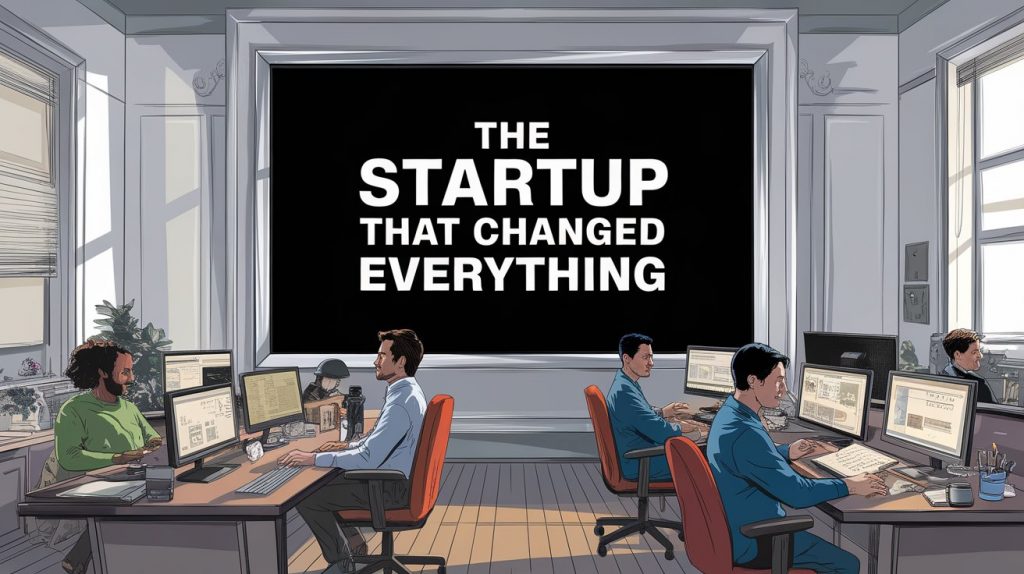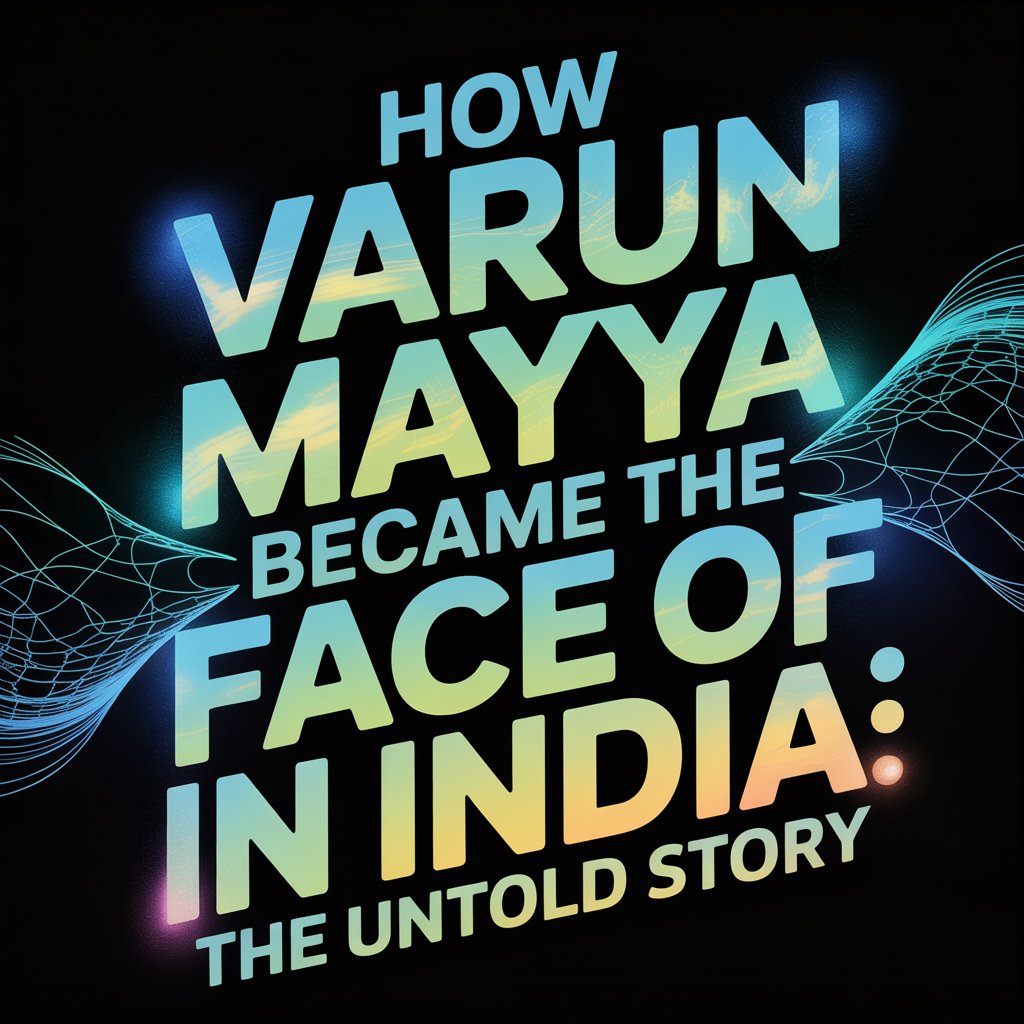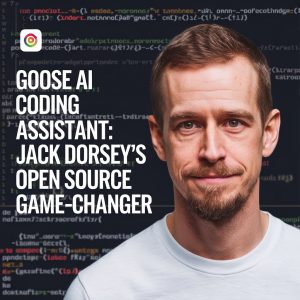If you’ve scrolled through Instagram Reels or YouTube Shorts looking for tech content lately, chances are you’ve stumbled upon Varun Mayya. You know, the guy who seems to drop a video about every major AI announcement before your morning coffee gets cold? Yeah, that’s him. But here’s what most people don’t know: Varun Mayya didn’t just become India’s AI guy overnight. His journey from a 11-year-old coder in Bengaluru to interviewing Sundar Pichai at Google I/O is honestly more fascinating than any algorithm could predict.
The Kid Who Started Coding When Others Were Playing Cricket

Let’s rewind to 1993. Varun Mayya was born in Bengaluru to a hardworking family—his mom worked in the CA industry at ICICI, and his dad was an ENT surgeon. Nothing about this screams “future AI influencer,” right? But here’s where it gets interesting.
At age 11, Varun got his hands on a Compaq Presario computer. While most kids that age were figuring out how to beat the next level in video games, Varun was actually building them. He started creating video games using raycaster engines, and some of his YouTube videos hit over 500,000 views back when YouTube was still finding its feet.
Think about that for a second. Most of us were struggling with homework at 11. This guy was already putting content out there that hundreds of thousands of people watched.
The College Dropout Who Wasn’t Actually a Dropout
Here’s a common misconception—people think Varun followed the typical “dropout billionaire” path. Nope. He actually completed his Computer Science Engineering degree from Manipal Institute of Technology (2011-2015). But here’s the twist: while studying, he took neural networks as an elective. This was 2014-15, way before AI became the hottest thing since sliced bread.
That decision? Pure gold. It laid the foundation for everything he’d build later.
But Varun wasn’t just another engineering student attending lectures and hoping for campus placements. In 2014, still in college, he co-founded Jobspire with his buddies Mohak Dhingra, Kartik Luke Singh, and Sandesh Kini.
The Startup That Changed Everything (Spoiler: It Failed First)

Before Jobspire, Varun tried his hand at a t-shirt company called SIZER. He made about ₹30 lakh, which sounds impressive until you realize the scaling issues led to massive losses. He’s openly talked about this failure, and honestly, that’s what makes him relatable. The dude isn’t selling you a “I made millions by 22” fantasy—he’s showing you the bruises from the journey.
When Jobspire launched, it wasn’t smooth sailing either. They applied to Microsoft Accelerator and got rejected for not having a polished product. Ouch. But here’s where Varun’s resilience kicked in. Instead of giving up, the team pivoted fast.
Jobspire became a recruitment platform that raised INR 1.7 crore ($262,000) in seed funding from six venture capitalists, including Purvi Capital. At just 20 years old, Varun became one of India’s youngest entrepreneurs to raise venture capital. The platform served over 4 million requests and worked with heavyweights like Uber and Swiggy.
In 2017, Jobspire was acquired by TurnToTech (later JustCode), a New York-based coding bootcamp. Varun worked there as a Product Manager for about ten months before deciding to return to India. And here’s where things get really interesting.
Why He Chose India Over Silicon Valley (And Nobody Expected This)
After selling his first company, the obvious move would’ve been to stay in the US, build something bigger, and chase that Silicon Valley dream. Everyone expected it. His friends probably expected it. Hell, even Varun probably thought about it.
But he came back to India.
Why? Because he saw something that most people missed. While everyone was busy idolizing the US startup scene, Varun realized that India’s opportunity was actually larger. In his own words from The Neon Show interview, “A Varun of 20 years ago would have definitely moved to the US… I don’t think so. I actually don’t think I would have moved to the US to start a company.”
He recognized that India’s digital transformation was just beginning. The creator economy was nascent. AI literacy was at zero. And someone needed to bridge that gap.
Avalon Labs: Where Everything Started Making Sense
Back in Bengaluru, Varun founded Avalon Labs in 2017. This wasn’t just another software company—it was his experiment factory. The team had a simple philosophy: test hypotheses quickly, experiment relentlessly, and iterate based on data.
From Avalon came several ventures:
- Foxbound and Enkidu (investments)
- Avalon Meta (later renamed Scenes), which raised $420,000 and described itself as a hybrid between education and gaming
Scenes was particularly interesting. It wasn’t just another EdTech app—it had free courses taught by the founders themselves, covering everything from finance to coding. The platform attracted 45,000 members and raised a pre-Series A round from notable investors including Kunal Shah (CRED founder) and Gaurav Munjal (Unacademy co-founder).
Eventually, Scenes was acquired by Unacademy in early 2023. But by then, Varun had already spotted his next big bet: generative AI.
The AI Epiphany That Changed His Life
Here’s where Varun Mayya truly separated himself from every other tech influencer in India. When ChatGPT launched in late 2022, most people were just playing with it, asking it to write poems or jokes. Varun saw the bigger picture immediately.
He didn’t just talk about AI—he started building with it. And not just building, but experimenting with real products that actual people could use:
- Godinabox.co – Brought GPT capabilities directly into WhatsApp (genius move for a market where WhatsApp is bigger than religion)
- AlphaCTR.com – A fine-tuned Stable Diffusion model specifically for creating YouTube thumbnails
- AutoCodePro.com – Text-to-code tool based on Smol
These tools collectively gained over a million users. But here’s what’s mind-blowing: Varun wasn’t just building AI tools. He was using AI to create content about AI. Meta, right?
The Content Strategy Nobody Saw Coming
In 2022, Varun and his wife Achina Mayya founded Aeos, a content and AI company that would completely redefine how content is created in India. But calling Aeos just a “content company” is like calling Tesla just a “car company.”
Aeos became a closed-loop content machine. Here’s how it works:
- Content creation (using AI)
- Distribution (multiple channels)
- Talent scouting
- Gen AI innovation
All under one roof. All feeding into each other.
The numbers are absolutely insane:
- 500+ team members (bootstrapped, not VC-funded)
- 25,000 sq ft office space in Bengaluru
- Over 400 million organic views per month across all channels
- 50+ original Instagram channels and YouTube brands
- 800+ B2B clients including Redbull, Amazon Prime, IPL teams, Godrej, and Lenovo
But here’s the kicker: Varun produces over 1,000 videos monthly using AI automation. Not 10. Not 100. One. Thousand.
How He Actually Creates Content (The Secret Sauce)
Most people think Varun sits in front of a camera all day. Wrong. He’s created an AI avatar of himself that mimics his face, voice, and even hand movements using Hume AI’s avatar tool.
His team follows this workflow:
- Research team monitors tech news in real-time
- ChatGPT and Claude expand bullet points into full scripts
- ElevenLabs generates his voice (they trained it by having Varun read all commonly used English words)
- AI avatar delivers the content
- AI editing tools handle post-production
The result? When Apple announces something at an event, Varun’s video about it is live within 15 minutes. Fifteen. Minutes. Most news outlets take hours or days.
This isn’t about replacing humans—it’s about augmenting capabilities. His editors don’t spend 6-7 hours making thumbnails anymore. They use AI to do it in minutes, freeing them up for more creative work.
The Sundar Pichai Moment That Made Him a Household Name
In May 2024, something happened that cemented Varun’s position as India’s AI face. He interviewed Sundar Pichai at Google I/O—the company’s biggest developer conference.
Think about that. A Bengaluru-based entrepreneur, with no FAANG background, sitting across from the CEO of Google, discussing AI’s future in India. The interview went viral, garnering over 700,000 views.
In the comments, one user wrote: “Varun, this is a fanboy moment for us as well. I see myself in you talking to Sundar Pichai.”
That’s the power of representation. Varun showed millions of young Indians that you don’t need an IIT degree or a Silicon Valley job to make it big. You just need to be obsessed with your craft and willing to experiment.
The Books That Showed He Could Write, Not Just Code
Varun’s not just a builder—he’s an educator. He’s authored two books that became bestsellers:
- Pyjama Profit: The Millennial’s Guide to a Sustainable Freelance Career – A Bloomsbury-published book that hit #1 on Amazon Business
- The Content Creator Handbook (co-authored with Achina Mayya) – Released in 2024, this book breaks down their exact content strategy
These weren’t ghost-written fluff pieces. They contained real frameworks, actual data, and honest insights about building online businesses. The fact that he took time away from building companies to document his knowledge? That’s the mark of someone who genuinely wants to lift others up.
Building India’s First AAA Video Game (Yes, Really)
Just when you thought Varun couldn’t add another dimension to his portfolio, he went and started Aeos Games. Their flagship project? “Unleash the Avatar” – a AAA video game based on Indian mythology, specifically a modern retelling of the Ramayana.
The game features Soulslike combat, is built with a 40-person team (including veterans from Ghost of Tsushima and Hogwarts Legacy), and is entirely self-funded. It’s set for a 2026 release on PC, with other platforms being considered.
Now, has it faced criticism? Absolutely. Some have pointed out stiff animations and repetitive combat in early gameplay reveals. But here’s the thing—India has never produced a AAA game before. Varun’s taking a massive risk, funding it from his own pocket, and showing the world that Indian studios can compete globally.
Win or lose, the attempt itself is significant.
The Social Media Empire That Happened “By Accident”
Today, Varun’s social media numbers are staggering:
- YouTube: 908K+ subscribers (his channels collectively get 100 million views monthly)
- Instagram: 1.1M+ followers with a 1.4% engagement rate
- LinkedIn: Active professional following
But what’s wild is that this wasn’t planned. Varun started creating content to document his AI experiments. People found it valuable. He kept making more. The audience grew organically.
He didn’t hire an agency to manage his socials. He didn’t run Instagram ads. He simply showed up consistently, explained complex AI concepts in simple terms, and demonstrated tools that people could actually use.
The Recognition That Made It Official
In 2025, Varun was named among the Top 40 AI and Machine Learning Influencers on Instagram. But honestly? The recognition just confirmed what everyone already knew. By that point, he’d already:
- Been awarded “Educational Influencer of the Year” in 2020
- Built AI tools with over 1 million users
- Attracted investments from top-tier VCs
- Become a TEDx speaker
- Interviewed the CEO of Google
The awards didn’t make him the face of AI in India. His work did.
Why He’s Different from Every Other “AI Influencer”
Here’s the honest truth: India has lots of AI influencers now. People making Reels about ChatGPT prompts, explaining how AI will steal your job, or showing you the latest AI tool.
But Varun’s different for three reasons:
1. He’s a Builder First, Influencer Second Varun has actual skin in the game. He’s not just talking about AI—he’s investing in it, building companies around it, and using it to solve real problems. When he talks about AI replacing jobs, it’s not fear-mongering; it’s coming from someone who’s actively hiring and thinking about how to upskill teams.
2. He Shows, Not Just Tells Most influencers say “use AI.” Varun shows you his exact workflow, the tools he uses, the mistakes he made, and the results he got. His transparency is refreshing in an era where everyone’s trying to sell you a course.
3. He Stayed in India This might be the most important factor. Varun didn’t chase the Silicon Valley dream. He bet on India, built in India, and created opportunities in India. That makes his success feel achievable for the average Indian entrepreneur.
The Philosophy Behind the Success
In various interviews, Varun’s shared insights that reveal his mindset:
On Money: “Does it matter to you in your life whether you have 5 crores in your bank or 500 crores? I knew from day one I’m happy being frugal. I drive an IT 10 today. The money is not for me—the money is to do all the things that I wanted to do as a child.”
On India vs America: “I think the US is culturally in decline. India has the opportunity, the talent, and the hunger. Why would I leave?”
On AI and Jobs: “We don’t want you being stuck in doing the same task. As technology replaces that particular job, we expect you to move one level up. And when it removes that, you move one level up again.”
This isn’t your typical hustle-culture BS. It’s a genuine philosophy about building sustainably, staying curious, and lifting others as you climb.
The Controversies He Didn’t Shy Away From
Let’s be real—Varun’s journey hasn’t been all sunshine and rainbows. He’s faced criticism:
The Job Loss Debate: Reddit users have called his AI-will-replace-jobs stance “exaggerated for views.” Critics say he’s fear-mongering. Varun’s response? Double down. He genuinely believes AI will transform work, and he’d rather prepare people than sugarcoat reality.
The “AI Expert” Label: Some questioned his credentials, especially after a 2023 podcast labeled him an “AI expert.” Critics pointed out that his views (like zero-energy costs via solar) were speculative. Fair point. But here’s the thing—Varun’s never claimed to be an AI researcher. He’s a builder and experimenter who shares what he learns.
Aeos Games Criticism: The early gameplay reveals for “Unleash the Avatar” received mixed reactions. Some called the animations stiff, combat repetitive. Varun acknowledged the feedback and kept building.
What matters is that he doesn’t hide from criticism. He addresses it, learns from it, and moves forward.
What Makes Him the “Face” of AI in India?
So why is Varun Mayya considered the face of AI in India? It’s a combination of factors that nobody else has replicated:
✅ Practical Experience: Built multiple AI tools with real user bases
✅ Content Consistency: 1,000+ videos monthly using AI-first workflows
✅ Thought Leadership: Interviewed by major tech leaders, invited to Google I/O
✅ Educational Impact: Two bestselling books, cohorts training thousands
✅ Business Success: Bootstrapped Aeos to 500+ employees and 400M monthly views
✅ Representation: Young, Indian, relatable, and didn’t need Silicon Valley validation
He’s not the face of AI because he’s the smartest or because he raised the most funding. He’s the face of AI because he made it accessible, showed people what’s possible, and proved that you can build world-class AI companies from Bengaluru.
The Investment Portfolio That Shows His Bet on India
Varun’s not just building his own companies—he’s actively investing in India’s tech ecosystem:
- 100xEngineers (AI education)
- BimaPe (insurance tech)
- Akudo (fintech)
- Indyfin (financial advisory)
- Deciml (micro-investing)
- Rooter (gaming)
- STAGE (live entertainment)
- HYPD (influencer marketing)
- SuperCluster (gaming guilds)
Each investment shows a clear thesis: back founders building for India, in India, solving Indian problems.
The Personal Life That Keeps Him Grounded
Behind every successful man, as they say, is a woman who’s probably just as successful if not more. Varun’s married to Achina Sirohi Mayya, and this isn’t just a romantic partnership—it’s a business one.
Achina is the COO of Aeos and runs operations, talent acquisition, and company culture. She’s got her own accolades, including national recognition from Times Internet. Together, they’ve built a 500-person company while maintaining their creative spark.
Varun’s also into gaming (obviously), creates projects in Unreal Engine, and blogs about his experiments. He’s not the typical “rise and grind” entrepreneur who’s forgotten what fun looks like. He’s building businesses around his interests, which is probably why everything feels so authentic.
What’s Next for Varun Mayya?
If you think Varun’s going to slow down, you haven’t been paying attention. Here’s what’s on the horizon:
- Aeos Games release in 2026—India’s first AAA game
- Expansion of AI tools to reach more global users
- More investments in Indian startups through his growing portfolio
- YAAS Media growth—their content-as-a-service offering
- New experiments in AI-powered content
But knowing Varun, there’s probably something brewing that nobody knows about yet. A new tool. A new company. A new category he’s about to create.
The Lessons Every Entrepreneur Can Learn from His Journey
If there’s one thing Varun Mayya’s journey teaches us, it’s this: you don’t need permission to build.
- He didn’t wait for an IIT degree (went to Manipal instead)
- He didn’t wait for VC funding (bootstrapped Aeos)
- He didn’t wait to be “credentialed” (started building and documenting)
- He didn’t wait for the perfect idea (experimented constantly until something stuck)
He just started. Failed. Learned. Iterated. Built again. And kept going.
Why This Story Matters for India
Varun Mayya’s rise isn’t just about one entrepreneur making it big. It represents something larger—the coming of age of India’s tech ecosystem.
For the longest time, Indian entrepreneurs looked to Silicon Valley for validation. They’d build in India but feel like they had to “make it” in the US to be taken seriously. Varun flipped that script entirely.
He proved that:
- You can build billion-view content from Bengaluru
- You can create AI tools that compete globally
- You can interview CEOs of trillion-dollar companies
- You can bootstrap to 500 employees
- You can do all this while staying in India, betting on India, and building for India
That’s powerful. That’s representation. That’s inspiration for millions of young Indians who now see themselves in Varun’s story.
The Final Word
How did Varun Mayya become the face of AI in India? It wasn’t luck. It wasn’t privilege. It wasn’t about being in the right place at the right time (though timing helped).
It was about:
- Starting at 11 and never stopping
- Failing fast, learning faster
- Betting on AI before it was cool
- Documenting everything and teaching others
- Building real products, not just talking about concepts
- Staying in India when Silicon Valley called
- Being authentic, transparent, and relatable
Today, when Indians think about AI, they don’t think about some distant Silicon Valley genius or a foreign tech giant. They think about a guy from Bengaluru who codes, creates content, builds games, writes books, invests in startups, and still finds time to explain AI concepts in simple Hindi-English on Instagram.
That’s Varun Mayya. And that’s why he’s the face of AI in India.






